Exercise comes in three exercise categories: concentric, isometric, and eccentric. Each category is a fundamental building block of a total exercise plan. Learning about these types of exercises will help you understand how your muscles work.
In this article, we shall explore concentric vs eccentric exercise, their benefits, importance, and more.
- Concentric vs Eccentric
- What Are Concentric Movements?
- What Are Eccentric Movements?
- What Are the Differences Between Eccentric and Concentric Squats?
- 3 Reasons Why You Should Do Eccentric Squats
- 3 Reasons Why You Should Do Concentric Squats
- Eccentric Squat Variations
- Concentric Squat Variation
- What Are the Similarities Between Concentric and Eccentric Contractions?
- Conclusion
- Related Questions
Concentric vs Eccentric
Concentric is when you contract or shorten your muscle, while eccentric is when you are lengthening or stretching the muscle.
One easy thing to remember to differentiate these two types of exercise is when you think about gravity.
The concentric movement is when you overcome gravity, while the eccentric movement is when you resist gravity.
A good example of a concentric movement is the upward movement of a squat, while eccentric exercise would be the opposite which is the downward motion of a squat.
| Concentric Contraction | Eccentric Contraction | |
| Muscle | Muscles shorten | Muscles lengthen |
| Direction | Direction of contraction muscle | Opposite direction of contraction muscle |
| Example | Upward movement of a squat | Downward movement of a squat |
What Are Concentric Movements?
A concentric movement is the most prominent type of muscle contraction. This type causes tension in your muscle as it compresses. When your muscle compresses, it generates power to move an object.
A bicep curl is one of the easiest concentric movements to recognise in weight training. Concentric movements are very important for building muscle.
Benefits of Concentric Movements
1. Muscle Development
A concentric exercise can help in boosting muscle strength. According to one study, an eight-week concentric training can increase muscle strength by 39.7% and the size of cross-sectional muscle by 3.3%.

2. Higher Training Frequency
Concentric training creates less delayed onset muscle soreness. It causes less wear on ligaments and joints and less muscle damage.
This means that it will cause less fatigue, and you will be able to recover more quickly and have a higher chance of training. It is also a secure choice for physical therapy and rehabilitation since it causes little damage to joints and ligaments.
3. Improves Power
One good benefit of doing concentric-only training is that it can enhance explosive power. Concentric exercises represent athletic movements that focus on speed, power and quickness.
For instance, in a football game, jumping and throwing the ball requires force and movement in one direction and concentric muscle actions are responsible for that.
Therefore, concentric training enhances athletes’ performance in the areas that focus on improving power and speed.
4. Perfecting Form
Slack form often happens during concentric movements. For example, when your knees cave in while standing up from a squat.
When you set apart or isolate this portion of the movement, you can perfect the form on your target area.
Examples of Concentric Exercises
The easiest way to picture a concentric muscle contraction is when you do a bicep curl with a dumbbell. Raising the dumbbell from a lengthy downward position toward the muscle is an example of concentric muscle contraction.
Weightlifting is the most common exercise associated with concentric exercises, but here are other sample workouts that activate your muscles as they shorten.
- lifting a barbell from the ground
- upward movement of a squat
- upward movement of a pull-up
- upward movement of a push-up
- standing up
- pulling yourself up
- lifting part of a hamstring curl
Side Effects and Risks of Concentric Movements
Even though concentric movements are great for building muscle, they can cause wear and tear on the joints. This increases your risk of overuse and injury. Repeated concentric exercises can lead to soreness and strain.
Remember to stretch before performing concentric exercises to relax, loosen the muscles, and avoid strain.
Do not hesitate to visit a doctor if you experience muscle pain longer than weeks because this may be an indicator of a more severe injury.
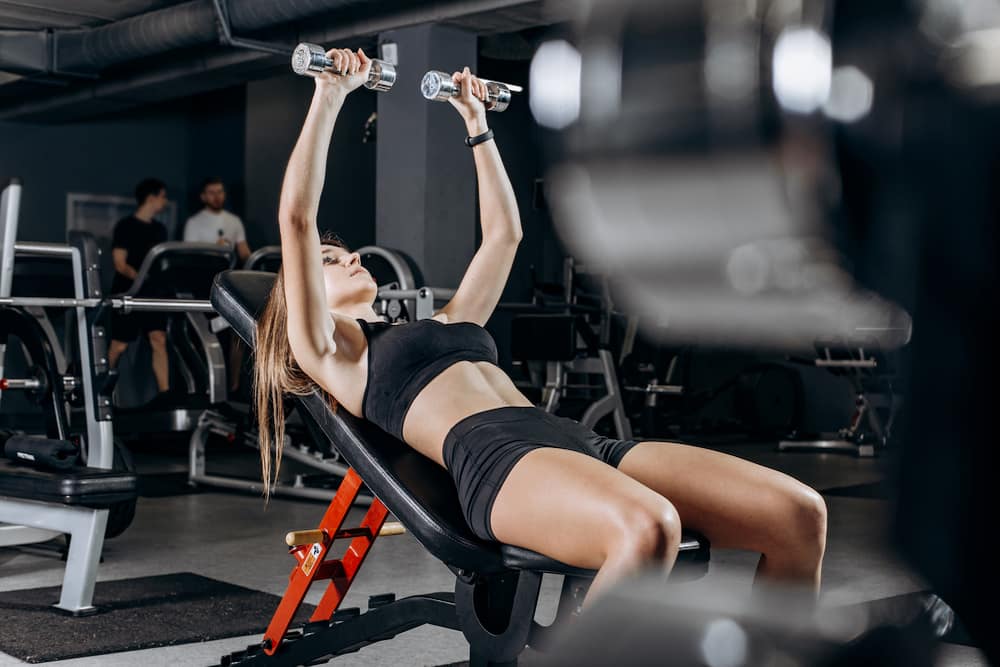
What Are Eccentric Movements?
Eccentric movement is the movement of an active muscle while it is extending under load. This phase of exercise works with the force of gravity.
For example, when you lower the barbell toward your chest in a bench press, this is the eccentric stage of the exercise, providing that the barbell is lowered slowly instead of letting it drop. Eccentric movements are also called negative movements.
Benefits of Eccentric Movements
1. Lower Risks of Injury
Eccentric movements improve muscle strength and support your body tissues. They help rehabilitate aches and pains and help in preventing injuries such as tendinitis or ACL strains.
2. Increased Flexibility
Doing eccentric exercises may lessen your need to perform flexibility exercises. Some studies show that people who have done eccentric hamstring workouts have enhanced their flexibility more.
The secret is to move through various movements as you do the eccentric phase of your workout. Your range of motion will become greater over time.
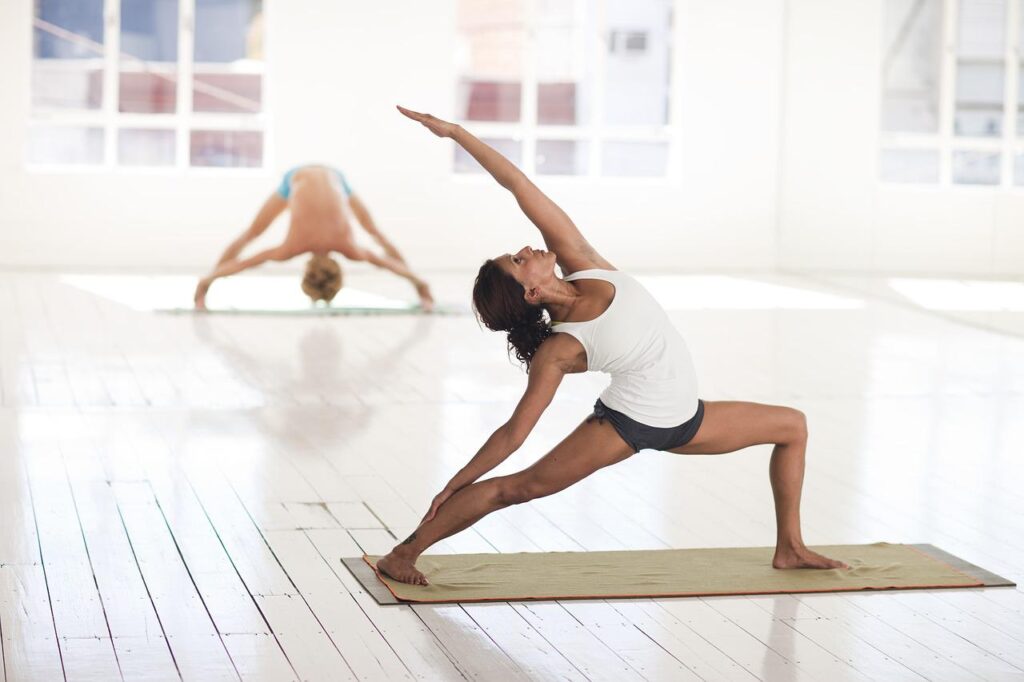
3. Boosts Metabolism
One good thing about doing eccentric exercises is that they are good in enhancing calorie burning even when you are resting. They increase the resting metabolic rate and can burn calories at rest even after 72 hours.
4. Better Sports Performance
Eccentric movements are not just about the things you do in a weightlifting room; these movements are also present in any workout, such as in volleyball or 10k training races. This means that focusing on eccentric moves can prepare your body for future sports challenges.
5. Rehabilitation
Eccentric workouts are often used in rehabilitation and physical therapy. This is because eccentric contractions can produce force with less energy. Thus, the more likely you won’t injure your muscles and joints.
This type of exercise is very beneficial for older adults who are not that capable of doing traditional eccentric-concentric workouts. Below are some medical conditions that eccentric training may be beneficial for:
- muscle/tendon injuries
- patellar tendonitis
- sarcopenia
- tendinosis
- other recurring stress injuries
Examples of Eccentric Exercises
Eccentric exercise can gain you a lot of benefits. Focusing on downward force can exert your muscle, and you may see many improvements in the weight room in no time. Below are some examples of eccentric exercises:
- when you lower weight during a shoulder press
- the downward movement of squatting
- the downward movement of a push-up
- when you lower your body during a crunch
- when you lower your body during a pull-up
- when you lower the barbell to the ground when doing a deadlift
- lowering your body in a squat

Side Effects and Risks of Eccentric Movements
Eccentric movement may have some advantages, but they also have some side effects and risks. The downward motion may protect against injury, but it can amplify the risk of DOMS or the delayed onset of muscle soreness. DOMS is the muscle pain you feel after you exercise.
This is because the small tears that progress as contracted muscle stretches cause pain and soreness within 24 to 72 hours after you exercise. Eccentric contractions can also cause a health risk if you lift weights heavier than your maximum capability.
For example, lowering heavy weight can cause elbow strain, shoulder injury or wrist sprain. In order to avoid such a problem, you need to know the right or ideal weight according to your capabilities.
The ideal lifting weight should be between 50% to 70% of your one-repetition maximum. That is the highest amount of weight you can carry in the right form.
Adding Eccentric Training to your Routine
If you want to give eccentric training a try, here are some safe and effective ways to add this workout to your fitness routine.
1. Slow your rhythm.
One way to add eccentric training to your exercise routine is by changing the speed at which you do your movements. One great way to begin is to prolong the lengthening part of a movement to 3 to 5 seconds.
For example, when squatting, just slowly sit down into a squat within 3 to 5 seconds. Then once you are already in a full squat, stand up at a regular pace and repeat.
2. Start easy.
Though there is so much eccentric training that you can do, it is recommended that you start simple. You can begin with a push-up and/or overhead press. These exercises are very basic and you just need to make a little adjustment in order to turn them into eccentric focus movements.
If you want to perform an eccentric push-up, begin with a high plank, then gradually lower yourself in 3 to 5 seconds. Once you are at the bottom of the move, slowly fall your body onto the ground.
One good thing about this eccentric push-up is that it is easier than a regular push-up; doing this will help you build strength to do regular push-ups more easily.
For eccentric overhead press, stand up with your feet apart and dumbbells at your shoulders. Lift the dumbbells at a steady pace and then gently lower them within 3 to 5 seconds before repeating the process.
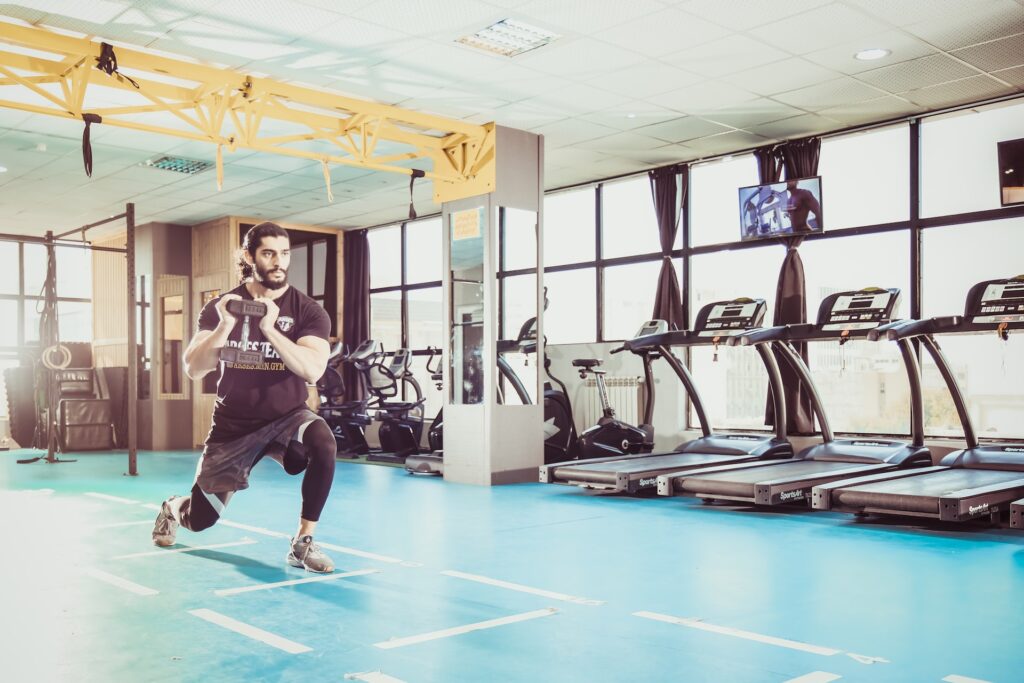
3. Use lighter weights.
Use lighter weights when doing eccentric workouts. The slower pace of eccentric training can put tension on your muscles during a lengthier time, and you may not be able to manage the same amount of weight as you regularly can.
Drop 5 to 10 pounds of weight when you are performing eccentric workouts. Remember that your form is more important than the amount of weight you are lifting.
4. Give importance to recovery.
Eccentric training can increase DOMS or the delayed onset muscle soreness. DOMS can be felt after 7 hours after a serious workout. It is important that you prioritise recovery when you experience this.
DOMS happens because the weight placed on the muscles is higher than the power generated by the muscles. Because of this, muscle damage can occur compared to if you are just doing a concentric workout.
5. Do it in moderation.
Eccentric training can give you many benefits but can also be a very tiring form of workout. Therefore adding eccentric training to your fitness routine should just be in moderation. The ideal amount of eccentric exercise is different for each person.
Generally, eccentric training should be done one or two days weekly as part of your routine. Remember that when you incorporate eccentric training into your workout, make sure that it will not supersede your whole workout routine.
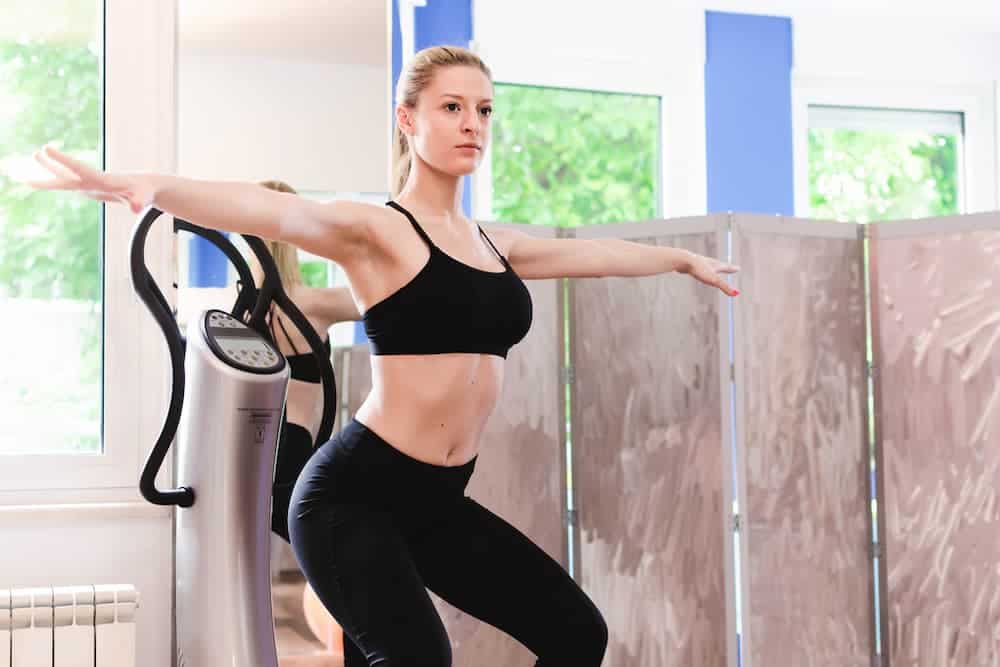
What Are the Differences Between Eccentric and Concentric Squats?
Before we differentiate, let’s define these two types of squats first:
- Eccentric Squat. An eccentric squat is the descending phase of a squat. This is usually done by adding more weight than the lifter can manage or by slowing down the tempo. It involves a phase where the muscles are stretching or lengthening.
- Concentric Squat. A concentric squat is a phase where the muscles are shortening. It is the ascending stage of the squat targeted, and it is usually done by slowing down the speed or beginning your squat from the bottom position.
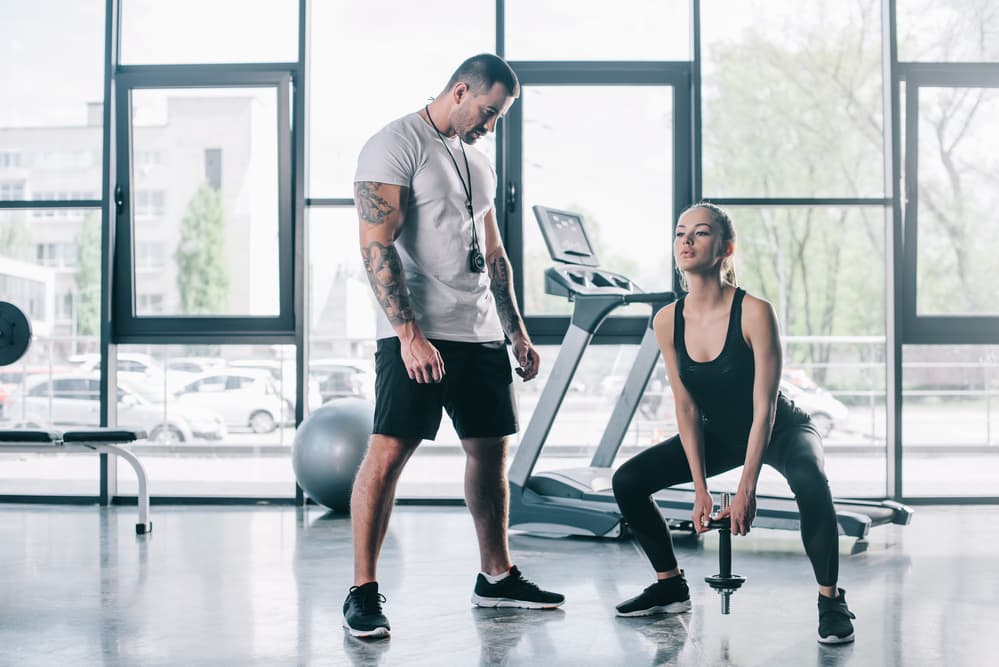
Weight Used
Eccentric squat uses a weightier load, as muscles are much stronger, defying weight while they are lengthening. On the other hand, a concentric squat uses lighter loads, as muscles are weaker when dynamically shortening to lift a load.
Range of Motion Used
The concentric squat emphasizes the ascending phase of the squat, while the eccentric squat emphasizes the descending phase of the squat.
Purpose of the Exercise
The purpose of concentric squats is to build the lifter’s strength through an upward workout motion. On the other hand, the eccentric phase is programmed to rehabilitate injury by forcing the lifter to slow down during exercise.
Equipment Used
Eccentric squats typically use load releasers. Load or weight releasers are hooks attached to a barbell so that they can add more load to the action while the lifting is squatting downward. Concentric squats generally use a power rack with changeable arms or stackable blocks.
Tempo
The time muscles spend under tension during eccentric squats is usually around 3 to 6 seconds of contraction. For the concentric squat, the tempo is between 3 to 6 seconds long as well.

3 Reasons Why You Should Do Eccentric Squats
To Reduce Tendinopathy
Eccentric squats are effective training amongst lifters during rehabilitation to reduce tendon pains and bring back function, especially for tendon pain connected to their knees.
One study found that lifters who did a three-month, 3-second eccentric-concentrated training had greater success compared to those who had undergone corticosteroid injections.
To Enhance Concentrics
Focusing on the lowering phase of action can enhance the upward phase. This may seem bizarre, but there is proof, specifically if you use weight releasers. Exercising with equipment like weight releasers can help lifters enhance the power and speed of their concentric movements.
To Obtain Technique
There are many lifters who have a hard time with their technique during the descending movement of a squat. Spending more time on eccentric squats will help lifters to develop top-level technique proficiency. Some lifters have difficulty managing the squat bar path, and eccentric-focused training will let them develop that skill.
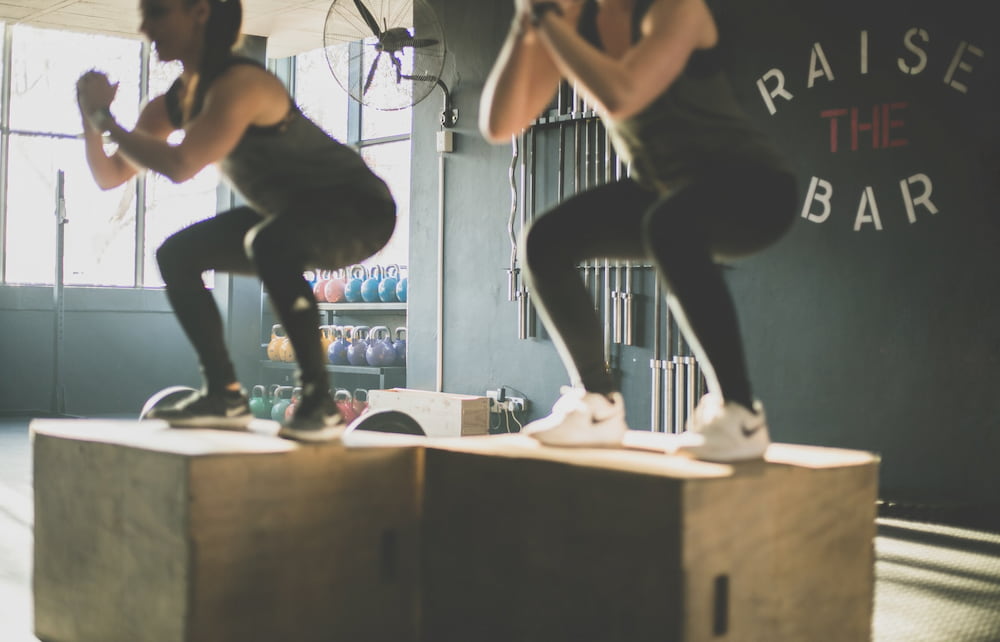
3 Reasons Why You Should Do Concentric Squats
To make weak ROM stronger
Doing concentric squat variations can target weak ROM or range of motion to help in locking out the weight.
To develop techniques
Performing a concentric-focus squat can help lifters correct their shortcomings during ascent. Giving time for practising the concentric phase of the squat while concentrating on specific squat cues can help enhance efficiency.
To cope with fatigue
Lifters are much weaker during concentric movements compared to eccentric contraction; thus, lifting much lighter weights is advisable when performing concentric squat variations.
Doing this will allow relief to cope with the fatigue that an athlete experiences during a hardcore heavy weightlifting-focused exercise session.
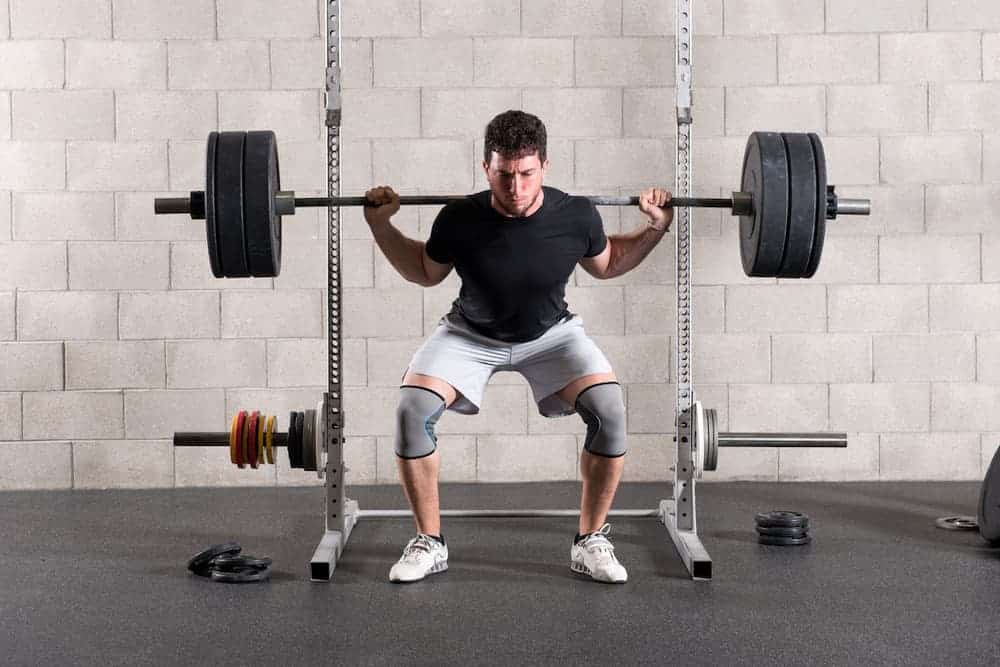
Eccentric Squat Variations
Here are a few eccentric squat exercises you can try.
1. The 3-0-1 Tempo Squat
This squat variation controls the time necessitated for the lifter to descend to the bottom of their squat (3 seconds of eccentric contraction.) Although the descending phase is accentuated, the lifter must still lift the bar independently for the concentric.
How to Do the 3-0-1 Tempo Squat
- Place the barbell about armpit height in a squat stand or a power rack.
- Grab the barbell like a regular back squat.
- Lower yourself under the bar as you step forward and position the barbell on its regular area on your back.
- After you set up the bar, make sure that your feet are directly under you.
- Vigorously stand up to remove the bar from the rack.
- Back away for one or two paces and modify the width of your feet to set your stand.
- Once you are ready to squat, breathe deeply into your core to prepare your midsection.
- Bend at your hips and knees to move down.
- At a steady speed, take 3 seconds to descend yourself to the lowermost of your squat.
- Do not stop at the bottom. Just rise up powerfully.
Some Tips on Performing the 3-0-1 Tempo Squat
- Be consistent with your speed. You may feel stronger during the first half of your eccentric squat and may tend to speed through the second part by rushing quickly into the bottom of your squat. However, you must fight the urge to accelerate and should just maintain the descending speed from the beginning to the bottom position.
- Level up to a 5-0-1 tempo when necessary. Some lifters are already used to doing a 2 to 3-second eccentric, which would mean that a 3-0-3 tempo will seem just a regular back squat for them. Rather than stick with the 3-0-1 tempo, level up to a 5-0-1 tempo to achieve the goal of the exercise.
Common Mistakes When Doing the 3-0-1 Tempo Squat
- Not speeding up upwards. Do not perform the same tempo squat because the 3-0-1 tempo squat only manipulates the lower phase. Lifters should accelerate the barbell upwards as speedy as you want under control.
- Pausing at the bottom. If you want your sets and reps to be consistent, never pause at the bottom of your squat.
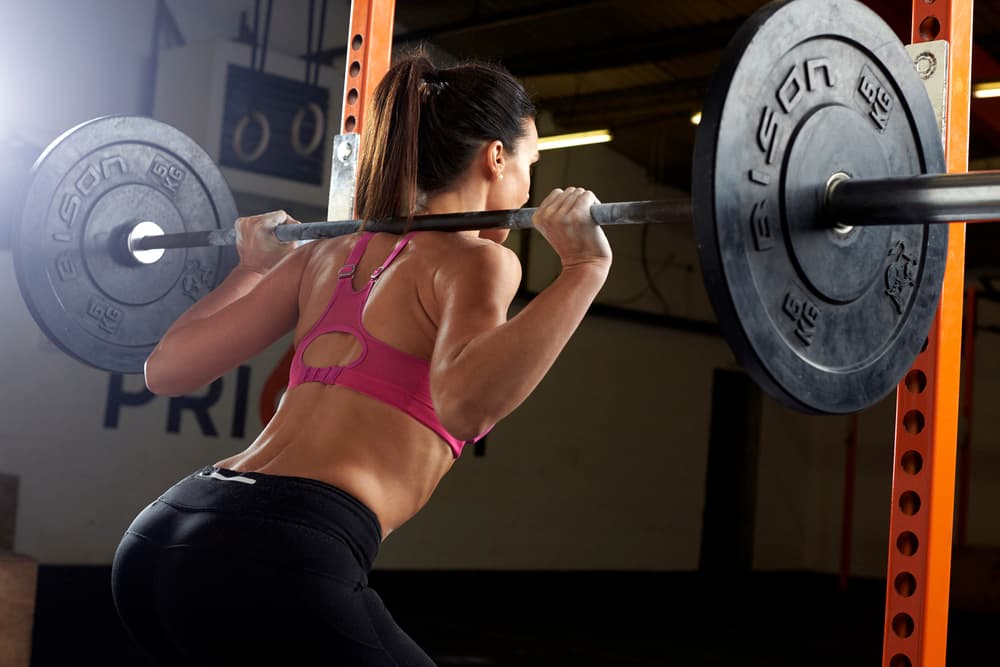
2. Weight Releaser Squat
A weight releaser squat is a type of squat variation that overworks the eccentric stage by using weight rods that unfasten at the last part of the first rep.
How to Do the Weight Releaser Squat
- Place the bar an inch or two below shoulder height in a power rack or squat stand.
- Do some warm-up sets, and then put a suitable load onto the bar.
- Put the weight releasers and the appropriate weight on each one.
- Lower yourself under the bar as you step forward and position the barbell on its regular area on your back.
- After you set up the bar, make sure that your feet are directly under you.
- Vigorously stand up to remove the bar from the rack.
- Move back slowly, and remember that the weight releasers will sway when you move back.
- Set your stance.
- Deeply breathe into your core and brace your midsection,
- Bend at your hips and knees to go lower.
- The weight releasers will disengage when you are near the bottom.
- Push the floor to rise up when you are slightly below.
Some Tips on Performing the Weight Releaser Squat
- Begin light with added weight. Lifters usually lower down with a 3-second eccentric, which means that the 3-0-0 tempo squat won’t be effective because they are used to it already. Rather than sticking with the 3-0-0 tempo, progressing to a 5-0-0 tempo will achieve the intention of the workout.
- Be laser-focused on the first rep. Most lifters will often advance up to a hundred pounds on the weight releasers. Try to focus on nailing your first rep. Either you continue doing additional repetitions or only do singles; you must be laser-focused.
Common Mistakes When Doing the Weight Releaser Squat
- Not putting up safeties. You need to be safe, especially if you will put more load on your eccentric phase. You do not want to get nailed down at the bottom of your squat with no other way out aside from dumping the bar at your back. Use safety arms such as suspension straps or spotters to affix to the power rack.
- Dropping uncontrollably on your squat. The main goal of the weight releaser is to overburden the eccentric part of a squat. If you drop uncontrollably or divebomb or vigorously speed up as you lower down using weight releasers, do not expect that this squat variation will enhance your squat strength and proficiency.
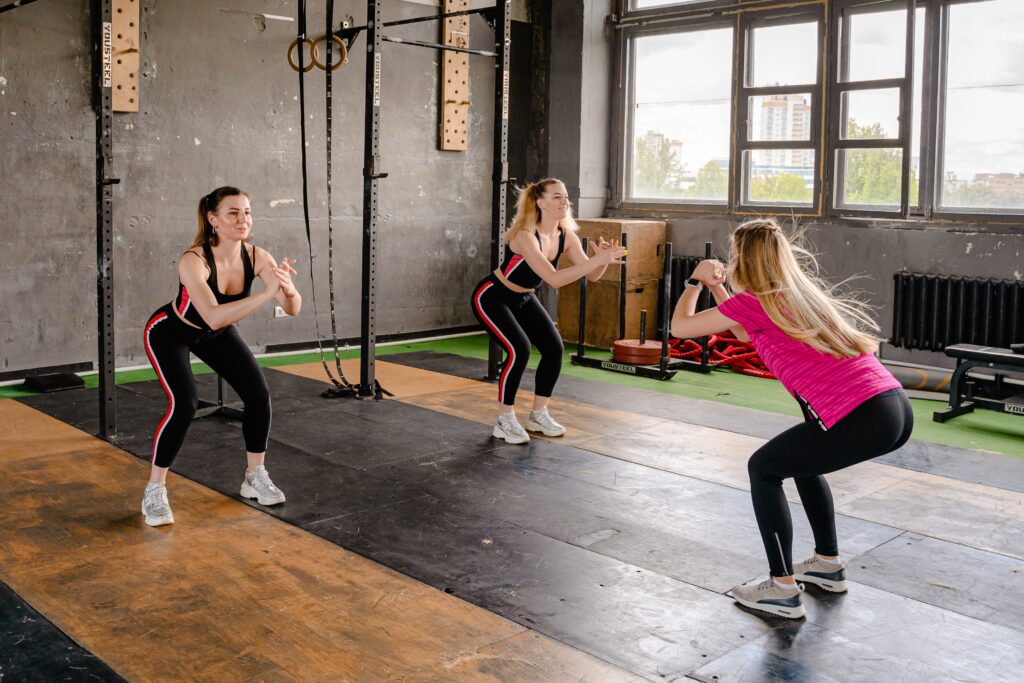
Concentric Squat Variation
1. 1-0-3 Tempo Squat
This form of squat tempo is an example of a barbell squat variation that will make you squat down without pausing and stretches the time under tension during the upward movement by doing a 3-second concentric.
How to do a 1-0-3 Tempo Squat
- Place the bar an inch or two below shoulder height in a power rack or squat stand.
- Hold the barbell past shoulder width with an overhand grip.
- Go towards the bar and dip below while maintaining a steady grip.
- Makes sure that the bar is properly set on your back.
- Once ready, stand up and clear the hooks by backing off two steps.
- Adjust your stance according to your preference.
- Deeply breathe in into your midsection and brace your core out.
- Do a squat by bending your knees and then slightly leaning forward.
- Just maintain leaning forward until you reach the squat bottom.
- From the bottom, slowly stand up for a 3 full seconds.
- Repeat the process once you go back to the standing position.
Some Tips on Performing the 1-0-3 Tempo Squat
- Change only the tempo. Some lifters train for a concentric tempo but will change other features of their technique, such as their squat stance or bar position. But doing the tempo squat is not the right time to do other techniques. You need to stick with a squat style that works best for you.
- Catch a gentle bounce. Catching a light bounce in the bottom urges athletes to move at a reduced speed that is needed in the concentric phase. It is important to remember that bouncing too much will cause you to hasten through the first part of the ascending part, where the lifters should focus more on.
Common Mistakes When Doing the 1-0-3 Tempo Squat
- Ascending speed inconsistency. Some lifters speed through the first part of the concentric when they are new to doing 1-0-3 tempo squat. You should always remember to ascend with a steady velocity and not do the ascending part at various speeds.
- Overlooking breathing. Some people forget to breathe when they are doing tempo work. Remember to breathe properly while doing tempo work. You must inhale at the top and then hold when descending and gently exhale on the ascent. You need to breathe entirely at the top of the rep.
What Are the Similarities Between Concentric and Eccentric Contractions?
- Both eccentric and concentric contraction changes in muscle length.
- They both produce force.
- Strength training includes both concentric and eccentric contractions.
- Cross-bridge cycling happens in both eccentric and concentric contractions.

Importance of Having Both Exercises in Your Training
Both eccentric and concentric movements can benefit your workout routine. Eccentric exercises can facilitate muscle change. It can withstand more power or force doing this type of exercise compared to other forms of exercise.
It can also enhance tendon stiffness. It helps improve the tendon unit load capacity, which helps strengthen the ability to adapt to load.
On the other hand, incorporating concentric movement into your fitness routine is also very important. This is because concentric exercises are known to be very effective in increasing optimal power output.
Concentric movements generate more muscle mass in your body. For instance, the heavier the object you are lifting, the more strength is produced over time.
Conclusion
Eccentric muscle contraction occurs when a muscle stretches, while concentric muscle contraction occurs when the muscle shortens. These two types of muscle contractions are very beneficial. Concentric exercises are known to help build muscle mass and improve strength and speed.
On the other hand, eccentric movements help in boosting metabolism, increase flexibility and are a good exercise for rehabilitation. Incorporating eccentric and concentric workouts into your exercise routine is a great addition to giving you an excellent total workout.
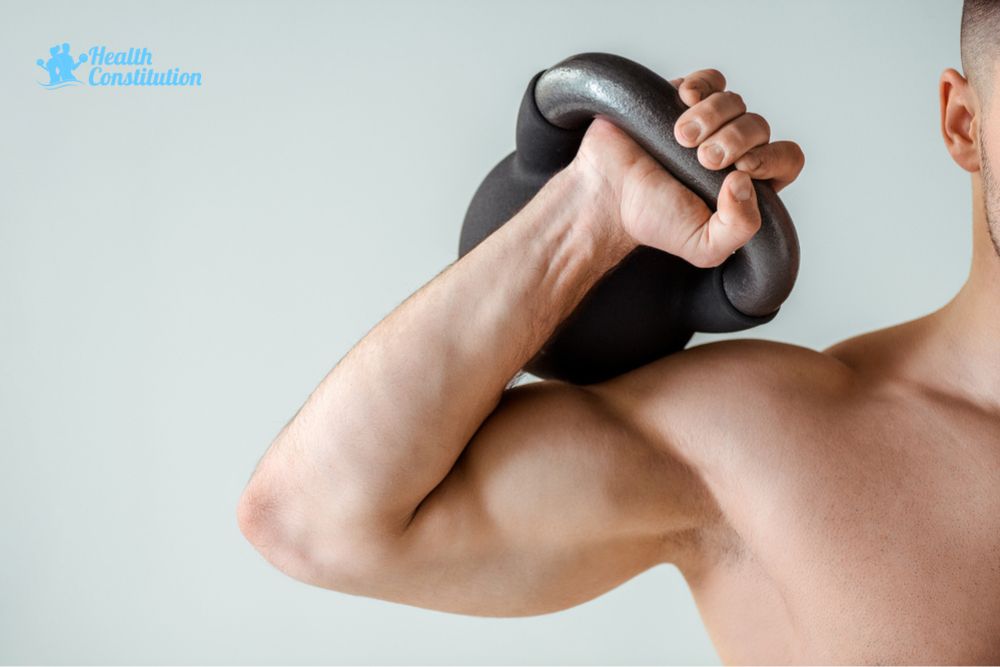
Related Questions
1. What are the 3 types of muscle contractions?
The three types of muscle contractions are concentric, eccentric and isometric. An isometric contraction is an action where muscles bring about force, but there is no movement. Muscle fibres do not change in length during isometric contractions.
Concentric contraction happens when a muscle’s force is more significant than resistance. Muscle fibres shorten during this movement. Eccentric contraction happens when the muscle’s force is less than the resistance. Muscle fibres lengthen during eccentric exercise.
2. Is squatting eccentric or concentric?
Eccentric and concentric movements are both parts of a squat. When you squat, the concentric movement happens in the quadriceps when you move upwards. On the other hand, eccentric contractions occur when you move downwards.
3. Do eccentric exercises make you stronger?
Yes, eccentric exercise makes you stronger. Eccentric exercise builds strength, power and speed compared to other forms of exercise.
4. What causes muscle contraction?
A muscle contraction occurs when an action potential moves along the nerves to the muscles. It starts when the nervous system creates an impulse which is called an action potential.
It passes through a nerve cell which is known as the motor neuron. The place where the motor neuron gets to the muscle cell is called the neuromuscular junction.
5. What is stronger concentric or eccentric?
Muscles are much stronger in eccentric contractions than in concentric contractions. When you perform an eccentric movement, your muscle force will increase. This phenomenon is known as residual force enhancement or RFE.
- How Long Should You Stay in a Sauna Safely? - 20 January 2024
- Boost Post-Workout Recovery: Benefits of Using a Sauna for Recovery - 19 January 2024
- Discover the Health Benefits of a Low EMF Infrared Sauna - 19 January 2024
